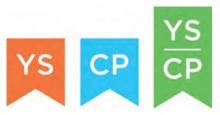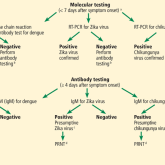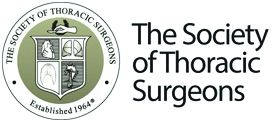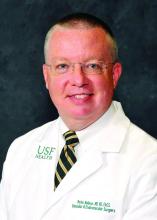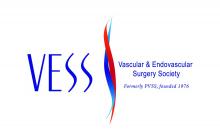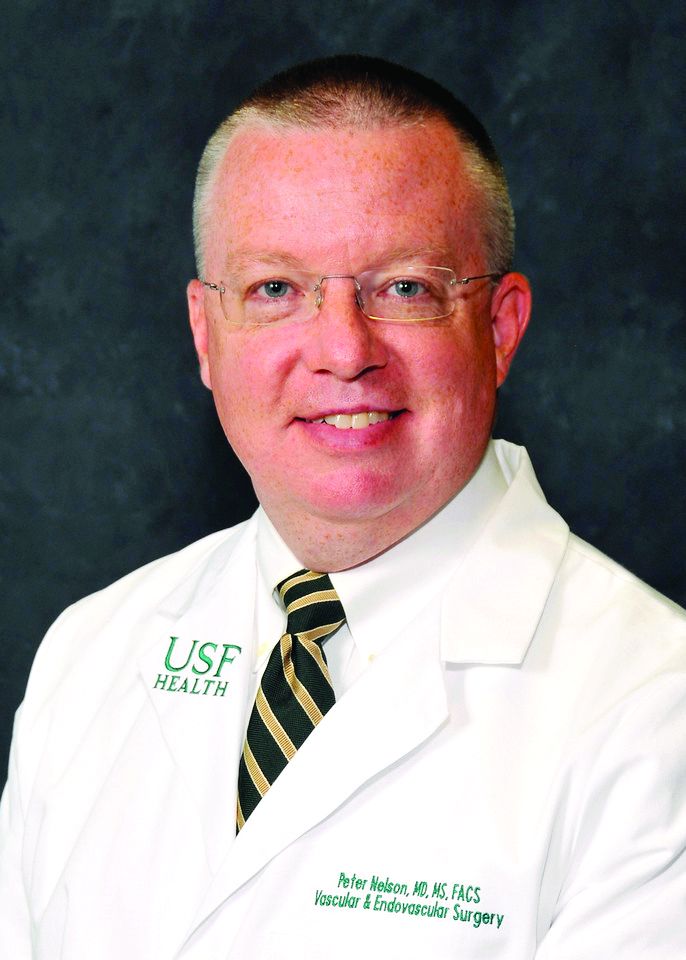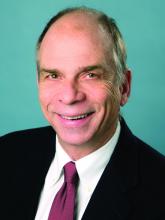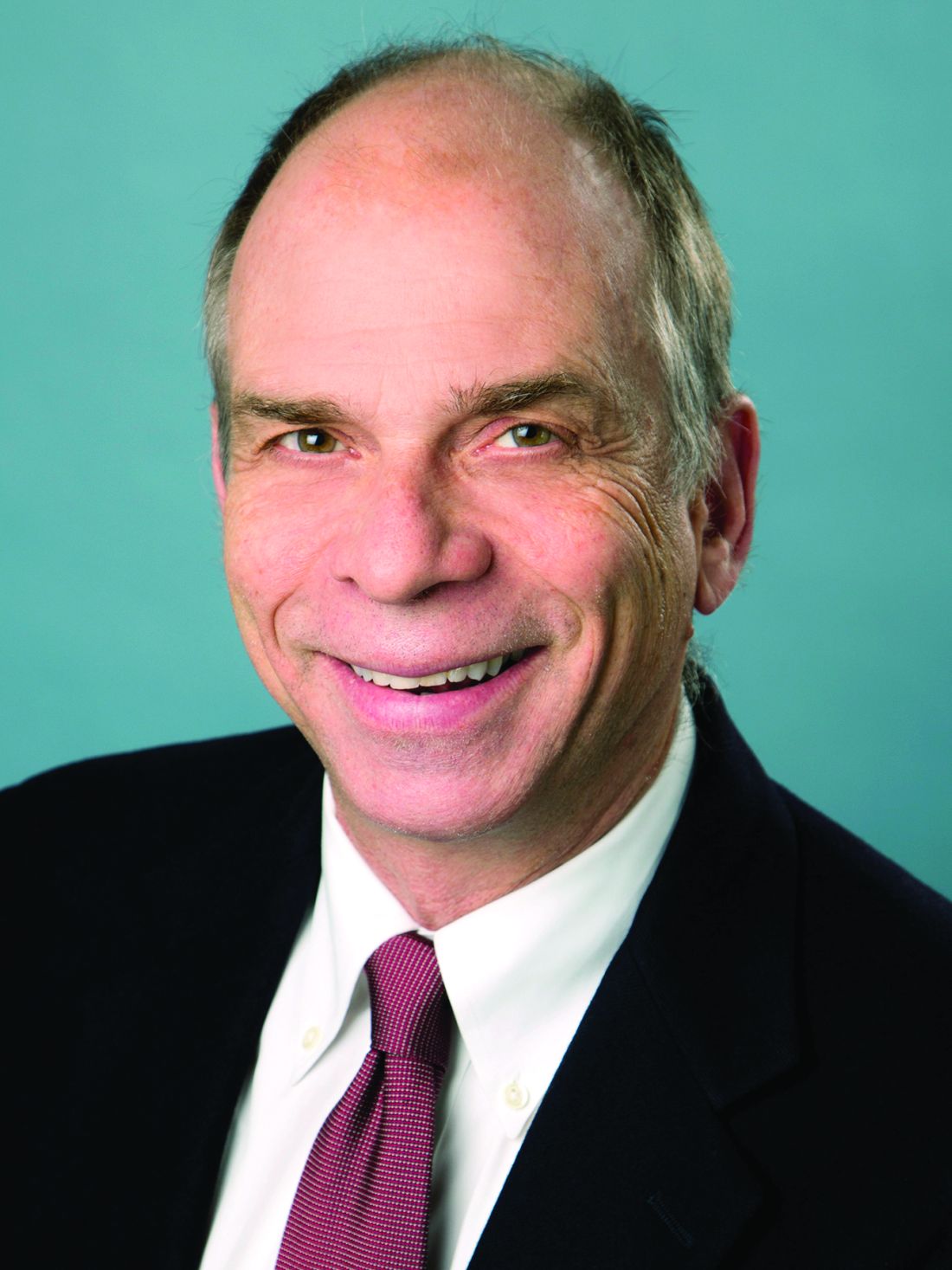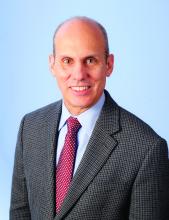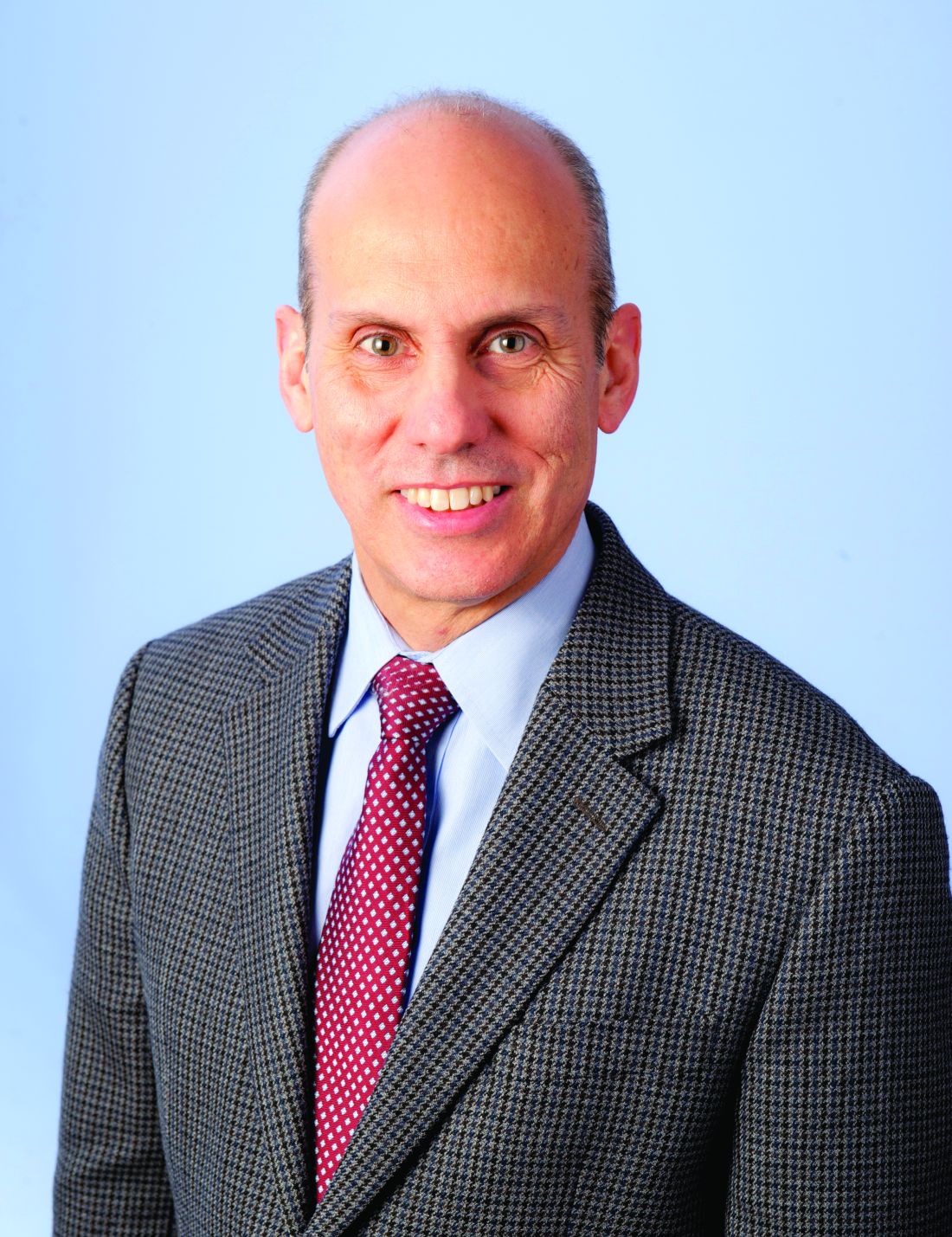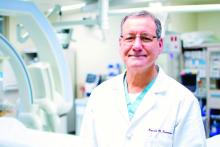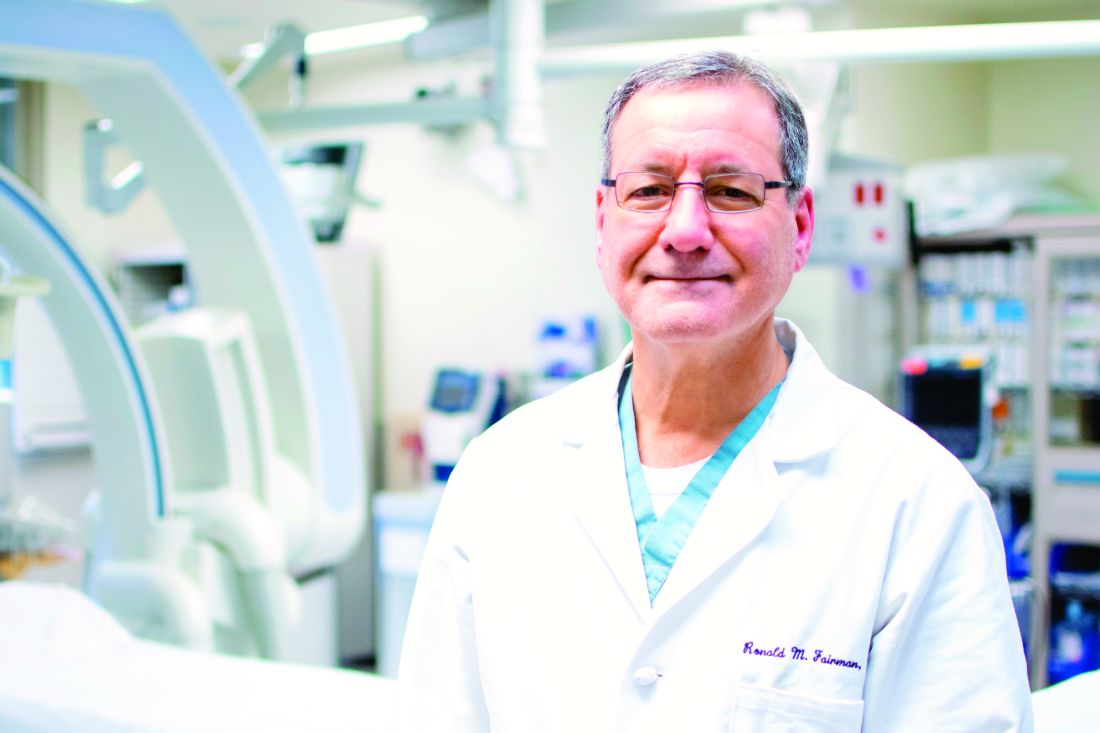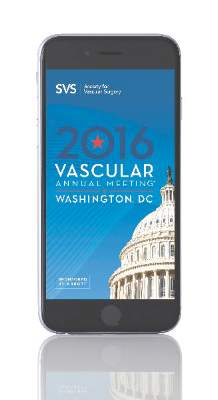User login
Curated Sessions: Look for the Labels
Something new has been added to this year’s Vascular Annual Meeting: icons identifying sessions of interest to two specific audiences: young surgeon attendees and community practice surgeons.
These curated sessions – identified by the Young Surgeons Committee and the Community Practice Committee – cover everything from abstracts to workshops, with breakfast and concurrent sessions and postgraduate courses in between.
The “young surgeon” sessions are generally aimed at young vascular surgeons – those still in training and those who have entered practice in the last few years, said YSC Chair Dr. Natalia Globova.
“Due to the many high-quality presentations and abstracts at the VAM, it can be challenging to select the sessions to attend to take full advantage of the programming, especially for those attendees who have only recently started coming to the meeting,” she said. The committee, she said, “hopes that this special ‘Young Surgeon’ designation will make the VAM easier to navigate.”
The Community Practice Committee similarly worked to identify sessions of particular interest to community-practice members.
“More than half of our membership is in private practice,” noted Committee Chair Dr. Richard Lynn, himself a community practitioner. “Topics such as wound care and limb management – the focus of the joint postgraduate course with the American Podiatric Medical Association – not to mention pedal/alternative access and billing and coding issues definitely impact us and our practices. Special designations in the program book lets our members maximize their time at VAM.”
Something new has been added to this year’s Vascular Annual Meeting: icons identifying sessions of interest to two specific audiences: young surgeon attendees and community practice surgeons.
These curated sessions – identified by the Young Surgeons Committee and the Community Practice Committee – cover everything from abstracts to workshops, with breakfast and concurrent sessions and postgraduate courses in between.
The “young surgeon” sessions are generally aimed at young vascular surgeons – those still in training and those who have entered practice in the last few years, said YSC Chair Dr. Natalia Globova.
“Due to the many high-quality presentations and abstracts at the VAM, it can be challenging to select the sessions to attend to take full advantage of the programming, especially for those attendees who have only recently started coming to the meeting,” she said. The committee, she said, “hopes that this special ‘Young Surgeon’ designation will make the VAM easier to navigate.”
The Community Practice Committee similarly worked to identify sessions of particular interest to community-practice members.
“More than half of our membership is in private practice,” noted Committee Chair Dr. Richard Lynn, himself a community practitioner. “Topics such as wound care and limb management – the focus of the joint postgraduate course with the American Podiatric Medical Association – not to mention pedal/alternative access and billing and coding issues definitely impact us and our practices. Special designations in the program book lets our members maximize their time at VAM.”
Something new has been added to this year’s Vascular Annual Meeting: icons identifying sessions of interest to two specific audiences: young surgeon attendees and community practice surgeons.
These curated sessions – identified by the Young Surgeons Committee and the Community Practice Committee – cover everything from abstracts to workshops, with breakfast and concurrent sessions and postgraduate courses in between.
The “young surgeon” sessions are generally aimed at young vascular surgeons – those still in training and those who have entered practice in the last few years, said YSC Chair Dr. Natalia Globova.
“Due to the many high-quality presentations and abstracts at the VAM, it can be challenging to select the sessions to attend to take full advantage of the programming, especially for those attendees who have only recently started coming to the meeting,” she said. The committee, she said, “hopes that this special ‘Young Surgeon’ designation will make the VAM easier to navigate.”
The Community Practice Committee similarly worked to identify sessions of particular interest to community-practice members.
“More than half of our membership is in private practice,” noted Committee Chair Dr. Richard Lynn, himself a community practitioner. “Topics such as wound care and limb management – the focus of the joint postgraduate course with the American Podiatric Medical Association – not to mention pedal/alternative access and billing and coding issues definitely impact us and our practices. Special designations in the program book lets our members maximize their time at VAM.”
VAM 2017 Features Alliances and Teamwork
This year’s Vascular Annual Meeting could be subtitled: “The Year of Inter-Society Collaboration.”
Last year, joint sessions with specialty societies that have overlapping interests proved so popular that the number of such sessions was expanded for 2017.
“These sessions provide a multidisciplinary perspective on our common problems, and showcase the SVS’ leadership role in vascular disease diagnosis and management,” said Dr. Ron Dalman, chair of the SVS VAM Program Committee.
“While our specialty encompasses broad expertise across the spectrum of vascular disease, as SVS members we also are interested in what we can learn from others. We want to advance the field, share information and hear how other perspectives may contribute to improved patient care.”
Dr. Kellie Brown, chair of the SVS Postgraduate Education Committee, agreed. “Collaboration helps us have a broader impact on disease management,” she said.
Seven societies are working with SVS members on eight joint programs, nearly double the number in 2016. They are: American Podiatric Medical Association, American Venous Forum, European Society for Vascular Surgery, Society of Thoracic Surgeons, Society for Vascular Medicine, Society for Vascular Nursing and the Society for Vascular Ultrasound.
Here are the 2017 joint sessions:
Wednesday, May 31Postgraduate course2 – 5 p.m.The APMA returns with another joint postgraduate course, “Advances in Wound Care and Limb Management.”
Friday, June 2Concurrent Sessions3:30 – 5 p.m.C5: SVS/ESVS: “Joint Debate Session”C6: SVS/STS: “Sharing Common Ground for Cardiovascular Problems”C7: SVS/AVF: “How and When to Treat Deep Venous Obstructions”
Saturday, June 3Concurrent Sessions10:30 a.m. – 12 p.m.C12: SVS/SVM: “Medical Management of Vascular Disease”C13: SVS/SVN: “Building the Vascular Team – Evolving Collaboration of Surgeons and Nurses”C14: SVS/SVU: “Organization, Operation and Management of a Vascular Laboratory”1:30 – 5:15 p.m. SVS/STS Summit: “Advances and Controversies in the Management of Complex Thoracoabdominal Aneurysmal Disease and Type B Aortic Dissection.” STS is co-sponsoring the session. Moderators for the thoracoabdominal portion are Dr. Jason T. Lee (SVS) and Dr. Wilson Szeto (STS); moderators for the portion on Type B aortic dissection are Dr. Matthew Eagleton (SVS) and Dr. Michael Fischbein (STS).
This year’s Vascular Annual Meeting could be subtitled: “The Year of Inter-Society Collaboration.”
Last year, joint sessions with specialty societies that have overlapping interests proved so popular that the number of such sessions was expanded for 2017.
“These sessions provide a multidisciplinary perspective on our common problems, and showcase the SVS’ leadership role in vascular disease diagnosis and management,” said Dr. Ron Dalman, chair of the SVS VAM Program Committee.
“While our specialty encompasses broad expertise across the spectrum of vascular disease, as SVS members we also are interested in what we can learn from others. We want to advance the field, share information and hear how other perspectives may contribute to improved patient care.”
Dr. Kellie Brown, chair of the SVS Postgraduate Education Committee, agreed. “Collaboration helps us have a broader impact on disease management,” she said.
Seven societies are working with SVS members on eight joint programs, nearly double the number in 2016. They are: American Podiatric Medical Association, American Venous Forum, European Society for Vascular Surgery, Society of Thoracic Surgeons, Society for Vascular Medicine, Society for Vascular Nursing and the Society for Vascular Ultrasound.
Here are the 2017 joint sessions:
Wednesday, May 31Postgraduate course2 – 5 p.m.The APMA returns with another joint postgraduate course, “Advances in Wound Care and Limb Management.”
Friday, June 2Concurrent Sessions3:30 – 5 p.m.C5: SVS/ESVS: “Joint Debate Session”C6: SVS/STS: “Sharing Common Ground for Cardiovascular Problems”C7: SVS/AVF: “How and When to Treat Deep Venous Obstructions”
Saturday, June 3Concurrent Sessions10:30 a.m. – 12 p.m.C12: SVS/SVM: “Medical Management of Vascular Disease”C13: SVS/SVN: “Building the Vascular Team – Evolving Collaboration of Surgeons and Nurses”C14: SVS/SVU: “Organization, Operation and Management of a Vascular Laboratory”1:30 – 5:15 p.m. SVS/STS Summit: “Advances and Controversies in the Management of Complex Thoracoabdominal Aneurysmal Disease and Type B Aortic Dissection.” STS is co-sponsoring the session. Moderators for the thoracoabdominal portion are Dr. Jason T. Lee (SVS) and Dr. Wilson Szeto (STS); moderators for the portion on Type B aortic dissection are Dr. Matthew Eagleton (SVS) and Dr. Michael Fischbein (STS).
This year’s Vascular Annual Meeting could be subtitled: “The Year of Inter-Society Collaboration.”
Last year, joint sessions with specialty societies that have overlapping interests proved so popular that the number of such sessions was expanded for 2017.
“These sessions provide a multidisciplinary perspective on our common problems, and showcase the SVS’ leadership role in vascular disease diagnosis and management,” said Dr. Ron Dalman, chair of the SVS VAM Program Committee.
“While our specialty encompasses broad expertise across the spectrum of vascular disease, as SVS members we also are interested in what we can learn from others. We want to advance the field, share information and hear how other perspectives may contribute to improved patient care.”
Dr. Kellie Brown, chair of the SVS Postgraduate Education Committee, agreed. “Collaboration helps us have a broader impact on disease management,” she said.
Seven societies are working with SVS members on eight joint programs, nearly double the number in 2016. They are: American Podiatric Medical Association, American Venous Forum, European Society for Vascular Surgery, Society of Thoracic Surgeons, Society for Vascular Medicine, Society for Vascular Nursing and the Society for Vascular Ultrasound.
Here are the 2017 joint sessions:
Wednesday, May 31Postgraduate course2 – 5 p.m.The APMA returns with another joint postgraduate course, “Advances in Wound Care and Limb Management.”
Friday, June 2Concurrent Sessions3:30 – 5 p.m.C5: SVS/ESVS: “Joint Debate Session”C6: SVS/STS: “Sharing Common Ground for Cardiovascular Problems”C7: SVS/AVF: “How and When to Treat Deep Venous Obstructions”
Saturday, June 3Concurrent Sessions10:30 a.m. – 12 p.m.C12: SVS/SVM: “Medical Management of Vascular Disease”C13: SVS/SVN: “Building the Vascular Team – Evolving Collaboration of Surgeons and Nurses”C14: SVS/SVU: “Organization, Operation and Management of a Vascular Laboratory”1:30 – 5:15 p.m. SVS/STS Summit: “Advances and Controversies in the Management of Complex Thoracoabdominal Aneurysmal Disease and Type B Aortic Dissection.” STS is co-sponsoring the session. Moderators for the thoracoabdominal portion are Dr. Jason T. Lee (SVS) and Dr. Wilson Szeto (STS); moderators for the portion on Type B aortic dissection are Dr. Matthew Eagleton (SVS) and Dr. Michael Fischbein (STS).
Collaborative Approach on Wound Care Improves Patient Outcomes
Because revascularization and wound care are so closely linked, vascular surgeons and podiatrists can improve patient care when they work together.
That’s the thinking behind a cooperative approach in “Advances in Wound Care and Limb Management,” a postgraduate course set for 2 to 5 p.m. Wednesday at the Vascular Annual Meeting. It is a joint session of the SVS and the American Podiatric Medical Association.
“Wound care is clearly very prevalent in the vascular community, something we do day to day,” said Dr. Richard Fries, co-moderating the course with Dr. James Christina, DPM, APMA executive director and CEO.
“It’s hard to go a day or two without seeing wound care or amputation issues. We thought a large audience at the Vascular Annual Meeting would find a thorough session on this very appealing.”
Dr. Fries and Dr. William Shutze worked to develop the program with the concentration eventually expanded to include partnering with the APMA. Both surgeons enthusiastically embraced the idea. “It was a logical choice,” said Dr. Fries. “Podiatrists are really the boots on the ground in terms of prevention. They are really the experts at preventative care. And that is something we need to stress to our patients, that good podiatric care will prevent wound progression and other problems.”
APMA plans to emphasize the many factors that must be considered in wound healing including off-loading, the use of biologics and an understanding of the basic principles of wound healing, said Dr. Christina.
“The continued alliance between podiatric physicians and vascular surgeons is especially important in wound healing as no matter what we do as podiatrists, without adequate circulation we cannot get wounds to heal,” he pointed out.
“The important collaborative role between revascularization by vascular surgeons and proper wound care by podiatrists leads to improved outcomes for patients, including reduced hospitalization, increased limb salvage and fewer amputations,” he said. “It is vital that both podiatrists and vascular surgeons recognize the roles that they play in the team approach to caring for wounds and the positive outcomes these have on patients’ lives.”
Course topics include: Avoiding diabetic foot complications, understanding wound healing, how and when to use off-loading to prevent amputation, using advanced wound-care products, wound healing studies, the economics of wound care and limb preservation and indocyanine green angiography and its use in limb preservation.
Prevention, Dr. Fries said, logically leads into surgical options that also are part of the postgrad course. These include: advantages of amputating a non-gangrenous limb; foot and ankle grafts and flaps, advanced amputations and alternative flaps, dressings and temporary prosthesis and use of basic and advanced prosthetics for amputee rehabilitation.
This postgraduate course is part of a concerted outreach to community practice members, who comprise a large proportion of SVS membership, said Dr. Fries. The topic was suggested by the SVS Community Practice Committee as being particularly relevant to private practice physicians. This program, and all others of special interest to that subgroup will be marked as such with a special icon in the program book and other programming materials.
Wednesday, May 31
2 – 5 p.m.
P5: SVS/APMA Joint Session: Advances in Wound Care and Limb Management
Because revascularization and wound care are so closely linked, vascular surgeons and podiatrists can improve patient care when they work together.
That’s the thinking behind a cooperative approach in “Advances in Wound Care and Limb Management,” a postgraduate course set for 2 to 5 p.m. Wednesday at the Vascular Annual Meeting. It is a joint session of the SVS and the American Podiatric Medical Association.
“Wound care is clearly very prevalent in the vascular community, something we do day to day,” said Dr. Richard Fries, co-moderating the course with Dr. James Christina, DPM, APMA executive director and CEO.
“It’s hard to go a day or two without seeing wound care or amputation issues. We thought a large audience at the Vascular Annual Meeting would find a thorough session on this very appealing.”
Dr. Fries and Dr. William Shutze worked to develop the program with the concentration eventually expanded to include partnering with the APMA. Both surgeons enthusiastically embraced the idea. “It was a logical choice,” said Dr. Fries. “Podiatrists are really the boots on the ground in terms of prevention. They are really the experts at preventative care. And that is something we need to stress to our patients, that good podiatric care will prevent wound progression and other problems.”
APMA plans to emphasize the many factors that must be considered in wound healing including off-loading, the use of biologics and an understanding of the basic principles of wound healing, said Dr. Christina.
“The continued alliance between podiatric physicians and vascular surgeons is especially important in wound healing as no matter what we do as podiatrists, without adequate circulation we cannot get wounds to heal,” he pointed out.
“The important collaborative role between revascularization by vascular surgeons and proper wound care by podiatrists leads to improved outcomes for patients, including reduced hospitalization, increased limb salvage and fewer amputations,” he said. “It is vital that both podiatrists and vascular surgeons recognize the roles that they play in the team approach to caring for wounds and the positive outcomes these have on patients’ lives.”
Course topics include: Avoiding diabetic foot complications, understanding wound healing, how and when to use off-loading to prevent amputation, using advanced wound-care products, wound healing studies, the economics of wound care and limb preservation and indocyanine green angiography and its use in limb preservation.
Prevention, Dr. Fries said, logically leads into surgical options that also are part of the postgrad course. These include: advantages of amputating a non-gangrenous limb; foot and ankle grafts and flaps, advanced amputations and alternative flaps, dressings and temporary prosthesis and use of basic and advanced prosthetics for amputee rehabilitation.
This postgraduate course is part of a concerted outreach to community practice members, who comprise a large proportion of SVS membership, said Dr. Fries. The topic was suggested by the SVS Community Practice Committee as being particularly relevant to private practice physicians. This program, and all others of special interest to that subgroup will be marked as such with a special icon in the program book and other programming materials.
Wednesday, May 31
2 – 5 p.m.
P5: SVS/APMA Joint Session: Advances in Wound Care and Limb Management
Because revascularization and wound care are so closely linked, vascular surgeons and podiatrists can improve patient care when they work together.
That’s the thinking behind a cooperative approach in “Advances in Wound Care and Limb Management,” a postgraduate course set for 2 to 5 p.m. Wednesday at the Vascular Annual Meeting. It is a joint session of the SVS and the American Podiatric Medical Association.
“Wound care is clearly very prevalent in the vascular community, something we do day to day,” said Dr. Richard Fries, co-moderating the course with Dr. James Christina, DPM, APMA executive director and CEO.
“It’s hard to go a day or two without seeing wound care or amputation issues. We thought a large audience at the Vascular Annual Meeting would find a thorough session on this very appealing.”
Dr. Fries and Dr. William Shutze worked to develop the program with the concentration eventually expanded to include partnering with the APMA. Both surgeons enthusiastically embraced the idea. “It was a logical choice,” said Dr. Fries. “Podiatrists are really the boots on the ground in terms of prevention. They are really the experts at preventative care. And that is something we need to stress to our patients, that good podiatric care will prevent wound progression and other problems.”
APMA plans to emphasize the many factors that must be considered in wound healing including off-loading, the use of biologics and an understanding of the basic principles of wound healing, said Dr. Christina.
“The continued alliance between podiatric physicians and vascular surgeons is especially important in wound healing as no matter what we do as podiatrists, without adequate circulation we cannot get wounds to heal,” he pointed out.
“The important collaborative role between revascularization by vascular surgeons and proper wound care by podiatrists leads to improved outcomes for patients, including reduced hospitalization, increased limb salvage and fewer amputations,” he said. “It is vital that both podiatrists and vascular surgeons recognize the roles that they play in the team approach to caring for wounds and the positive outcomes these have on patients’ lives.”
Course topics include: Avoiding diabetic foot complications, understanding wound healing, how and when to use off-loading to prevent amputation, using advanced wound-care products, wound healing studies, the economics of wound care and limb preservation and indocyanine green angiography and its use in limb preservation.
Prevention, Dr. Fries said, logically leads into surgical options that also are part of the postgrad course. These include: advantages of amputating a non-gangrenous limb; foot and ankle grafts and flaps, advanced amputations and alternative flaps, dressings and temporary prosthesis and use of basic and advanced prosthetics for amputee rehabilitation.
This postgraduate course is part of a concerted outreach to community practice members, who comprise a large proportion of SVS membership, said Dr. Fries. The topic was suggested by the SVS Community Practice Committee as being particularly relevant to private practice physicians. This program, and all others of special interest to that subgroup will be marked as such with a special icon in the program book and other programming materials.
Wednesday, May 31
2 – 5 p.m.
P5: SVS/APMA Joint Session: Advances in Wound Care and Limb Management
The Vascular and Endovascular Surgery Society Welcomes You to VAM 2017
I would like to personally welcome everyone to San Diego and invite all 2017 Vascular Annual Meeting attendees to visit the Spring Meeting of the Vascular and Endovascular Surgery Society (VESS).
This year’s program will be held on Wednesday, May 31, and comprises two informative paper sessions from 7:30 to 11:30 a.m. and 12:30 to 4:00 p.m.in the San Diego Convention Center Room 6F (upper level).
Founded in 1976 by 19 forward-thinking young vascular surgeons, VESS has grown to become a prominent national and international organization boasting over 1,000 members.
Focused on young vascular surgeons in both academic and community practice, VESS offers excellent educational opportunities, competitive research grant programs, and networking opportunities for career growth. A few examples include the resident/fellow research award, the junior faculty research award, the VESS travel grant, the Women and Diversity Meet the Leaders Mentor Program, and the resident/fellows career development symposium and emerging technology forum.
In line with these priorities, VESS is co-sponsoring along with SVS Young Surgeons’ Committee the VAM General Surgery Resident/Medical Student Program Welcome Reception on Wednesday, May 31, from 6:45 to 7:45 p.m. in Marina Ballroom D at the Marriott Marquis. Please come by and interact with future vascular surgeons from across the country.
The weekend will feature high-caliber research presentations, open interactive discussion, and hands-on simulation programs, blended with exciting social events all set in 5,200 acres of pristine ski and snowboard terrain with activities for the entire family. I encourage you to take advantage of everything the unique setting of the Annual Meeting has to offer.
Visit our new website www.vesurgery.org for more details or email me personally at [email protected]. I look forward to seeing you in San Diego!
Peter R. Nelson, MD, MS
VESS President
I would like to personally welcome everyone to San Diego and invite all 2017 Vascular Annual Meeting attendees to visit the Spring Meeting of the Vascular and Endovascular Surgery Society (VESS).
This year’s program will be held on Wednesday, May 31, and comprises two informative paper sessions from 7:30 to 11:30 a.m. and 12:30 to 4:00 p.m.in the San Diego Convention Center Room 6F (upper level).
Founded in 1976 by 19 forward-thinking young vascular surgeons, VESS has grown to become a prominent national and international organization boasting over 1,000 members.
Focused on young vascular surgeons in both academic and community practice, VESS offers excellent educational opportunities, competitive research grant programs, and networking opportunities for career growth. A few examples include the resident/fellow research award, the junior faculty research award, the VESS travel grant, the Women and Diversity Meet the Leaders Mentor Program, and the resident/fellows career development symposium and emerging technology forum.
In line with these priorities, VESS is co-sponsoring along with SVS Young Surgeons’ Committee the VAM General Surgery Resident/Medical Student Program Welcome Reception on Wednesday, May 31, from 6:45 to 7:45 p.m. in Marina Ballroom D at the Marriott Marquis. Please come by and interact with future vascular surgeons from across the country.
The weekend will feature high-caliber research presentations, open interactive discussion, and hands-on simulation programs, blended with exciting social events all set in 5,200 acres of pristine ski and snowboard terrain with activities for the entire family. I encourage you to take advantage of everything the unique setting of the Annual Meeting has to offer.
Visit our new website www.vesurgery.org for more details or email me personally at [email protected]. I look forward to seeing you in San Diego!
Peter R. Nelson, MD, MS
VESS President
I would like to personally welcome everyone to San Diego and invite all 2017 Vascular Annual Meeting attendees to visit the Spring Meeting of the Vascular and Endovascular Surgery Society (VESS).
This year’s program will be held on Wednesday, May 31, and comprises two informative paper sessions from 7:30 to 11:30 a.m. and 12:30 to 4:00 p.m.in the San Diego Convention Center Room 6F (upper level).
Founded in 1976 by 19 forward-thinking young vascular surgeons, VESS has grown to become a prominent national and international organization boasting over 1,000 members.
Focused on young vascular surgeons in both academic and community practice, VESS offers excellent educational opportunities, competitive research grant programs, and networking opportunities for career growth. A few examples include the resident/fellow research award, the junior faculty research award, the VESS travel grant, the Women and Diversity Meet the Leaders Mentor Program, and the resident/fellows career development symposium and emerging technology forum.
In line with these priorities, VESS is co-sponsoring along with SVS Young Surgeons’ Committee the VAM General Surgery Resident/Medical Student Program Welcome Reception on Wednesday, May 31, from 6:45 to 7:45 p.m. in Marina Ballroom D at the Marriott Marquis. Please come by and interact with future vascular surgeons from across the country.
The weekend will feature high-caliber research presentations, open interactive discussion, and hands-on simulation programs, blended with exciting social events all set in 5,200 acres of pristine ski and snowboard terrain with activities for the entire family. I encourage you to take advantage of everything the unique setting of the Annual Meeting has to offer.
Visit our new website www.vesurgery.org for more details or email me personally at [email protected]. I look forward to seeing you in San Diego!
Peter R. Nelson, MD, MS
VESS President
VQI Adds Half-Day, Posters, Reception to Meeting
The 2016 Vascular Quality Initiative’s inaugural annual meeting proved so popular that the one-day session has been expanded by a half-day, and a networking reception and poster abstract session added.
VQI@VAM kicks off at noon Tuesday, May 30, and continues all day Wednesday, May 31. Day Two coincides with opening day of the Vascular Annual Meeting.
“Participants were very positive about all the content we offered last year,” said Dr. Jens Eldrup-Jorgensen, VQI’s new medical director. It was also a very full day. With attendees interested in learning more, expanding the meeting became essential.
“Data managers wanted two additions: more detailed information about the registries and content specific to data managers that would cover all the registries, plus more time to network, to have time to share information and best practices with people from other institutions.”
The additional half day is specifically dedicated to data managers. Concurrent sessions will permit the managers to attend sessions on the registries most interesting to them, diving deeply into the data. Popular topics, such as the registries for Endovascular AAA Repair and Peripheral Vascular Intervention, will be repeated so attendees have more than one opportunity to review that information.
Adding the posters and networking reception at the end of the first day adds another dimension to the meeting. The posters will cover quality improvement or improvement in the processes of using the registries, such as how best to enter data to create reports or how to use that data for quality improvement projects. With posters presented during the reception, all participants can converse with others on best practices and how to solve problems, said Dr. Eldrup-Jorensen.
The reception and poster session will be from 5 to 6:30 p.m.
VQI@ VAM continues from 8 a.m. to 5 p.m. Wednesday, May 31. At 12 p.m., Dr. Eldrup-Jorgensen, VQI’s will present the Keynote Address, “National Quality Initiatives and Critical Priorities for the VQI.”
For more information, visit www.vascularqualityinitiative.org.
The 2016 Vascular Quality Initiative’s inaugural annual meeting proved so popular that the one-day session has been expanded by a half-day, and a networking reception and poster abstract session added.
VQI@VAM kicks off at noon Tuesday, May 30, and continues all day Wednesday, May 31. Day Two coincides with opening day of the Vascular Annual Meeting.
“Participants were very positive about all the content we offered last year,” said Dr. Jens Eldrup-Jorgensen, VQI’s new medical director. It was also a very full day. With attendees interested in learning more, expanding the meeting became essential.
“Data managers wanted two additions: more detailed information about the registries and content specific to data managers that would cover all the registries, plus more time to network, to have time to share information and best practices with people from other institutions.”
The additional half day is specifically dedicated to data managers. Concurrent sessions will permit the managers to attend sessions on the registries most interesting to them, diving deeply into the data. Popular topics, such as the registries for Endovascular AAA Repair and Peripheral Vascular Intervention, will be repeated so attendees have more than one opportunity to review that information.
Adding the posters and networking reception at the end of the first day adds another dimension to the meeting. The posters will cover quality improvement or improvement in the processes of using the registries, such as how best to enter data to create reports or how to use that data for quality improvement projects. With posters presented during the reception, all participants can converse with others on best practices and how to solve problems, said Dr. Eldrup-Jorensen.
The reception and poster session will be from 5 to 6:30 p.m.
VQI@ VAM continues from 8 a.m. to 5 p.m. Wednesday, May 31. At 12 p.m., Dr. Eldrup-Jorgensen, VQI’s will present the Keynote Address, “National Quality Initiatives and Critical Priorities for the VQI.”
For more information, visit www.vascularqualityinitiative.org.
The 2016 Vascular Quality Initiative’s inaugural annual meeting proved so popular that the one-day session has been expanded by a half-day, and a networking reception and poster abstract session added.
VQI@VAM kicks off at noon Tuesday, May 30, and continues all day Wednesday, May 31. Day Two coincides with opening day of the Vascular Annual Meeting.
“Participants were very positive about all the content we offered last year,” said Dr. Jens Eldrup-Jorgensen, VQI’s new medical director. It was also a very full day. With attendees interested in learning more, expanding the meeting became essential.
“Data managers wanted two additions: more detailed information about the registries and content specific to data managers that would cover all the registries, plus more time to network, to have time to share information and best practices with people from other institutions.”
The additional half day is specifically dedicated to data managers. Concurrent sessions will permit the managers to attend sessions on the registries most interesting to them, diving deeply into the data. Popular topics, such as the registries for Endovascular AAA Repair and Peripheral Vascular Intervention, will be repeated so attendees have more than one opportunity to review that information.
Adding the posters and networking reception at the end of the first day adds another dimension to the meeting. The posters will cover quality improvement or improvement in the processes of using the registries, such as how best to enter data to create reports or how to use that data for quality improvement projects. With posters presented during the reception, all participants can converse with others on best practices and how to solve problems, said Dr. Eldrup-Jorensen.
The reception and poster session will be from 5 to 6:30 p.m.
VQI@ VAM continues from 8 a.m. to 5 p.m. Wednesday, May 31. At 12 p.m., Dr. Eldrup-Jorgensen, VQI’s will present the Keynote Address, “National Quality Initiatives and Critical Priorities for the VQI.”
For more information, visit www.vascularqualityinitiative.org.
Learn Ins and Outs of Launching a Multicenter Clinical Trial
To help SVS members learn the necessary steps of setting up a multicenter clinical research study, this year’s Vascular Annual Meeting offers “The Nuts and Bolts of a Multicenter Clinical Trial.” The concurrent session will be held from 5 to 6:30 p.m. Wednesday, VAM’s opening day.
“The most accepted method of definitively answering questions is a clinical trial,” said SVS Clinical Research Committee Chair and co-moderator, Dr. Raul Guzman. Though many SVS members have participated in multicenter trials, “They’re not easy endeavors,” said Dr. Guzman. “It takes time, commitment and money to really push forward an idea for a multicenter trial from the ground up.”
“Nuts and Bolts” will provide an insider’s view of effective approaches and processes for launching a multicenter clinical trial, focusing on the best strategies and the challenges involved. “We hope that at the end of the session, attendees will have sufficient detail about this process so they could begin their own trial. We want to provide an initial education,” Dr. Guzman said.
Speakers include SVS members who are successful clinical investigators:
Dr. Brajesh Lal, will speak on “How to Get Started – Perspectives from CREST and CREST-2”
Dr. Alik Farber, “Trial Execution – Tips from the BEST-CLI Trial Investigators”
Dr. B. Timothy Baxter, “The End Game, Finishing Your Trial – How We Did It in NTA^3CT”
Dr. C. Keith Ozaki, “The Small Multicenter Randomized Trial – Involving Your Friends and Neighbors”
Dr. Philip Goodney, “Patient-Oriented Research – A Multicenter Approach to PCORI Trials”
“A discussion about how to overcome challenges and avoid potential pitfalls that can be encountered during the various stages of trial execution are an important part of the course. “Our speakers will discuss not only what they did well, but what they could do better,” said Dr. Guzman.
Many members have questions that need answers, he said. “I would venture to say that most SVS members have had an idea for a clinical trial. They’ve formed the basis of a trial but there are so many challenges that they’ve been discouraged. One of the questions is, “Where do you even start?’
“We think we’ll be able to answer that for them,” Dr. Guzman said.
Wednesday, May 31
5 – 6:30 p.m.
C2: The Nuts and Bolts of a Multicenter Clinical Trial
To help SVS members learn the necessary steps of setting up a multicenter clinical research study, this year’s Vascular Annual Meeting offers “The Nuts and Bolts of a Multicenter Clinical Trial.” The concurrent session will be held from 5 to 6:30 p.m. Wednesday, VAM’s opening day.
“The most accepted method of definitively answering questions is a clinical trial,” said SVS Clinical Research Committee Chair and co-moderator, Dr. Raul Guzman. Though many SVS members have participated in multicenter trials, “They’re not easy endeavors,” said Dr. Guzman. “It takes time, commitment and money to really push forward an idea for a multicenter trial from the ground up.”
“Nuts and Bolts” will provide an insider’s view of effective approaches and processes for launching a multicenter clinical trial, focusing on the best strategies and the challenges involved. “We hope that at the end of the session, attendees will have sufficient detail about this process so they could begin their own trial. We want to provide an initial education,” Dr. Guzman said.
Speakers include SVS members who are successful clinical investigators:
Dr. Brajesh Lal, will speak on “How to Get Started – Perspectives from CREST and CREST-2”
Dr. Alik Farber, “Trial Execution – Tips from the BEST-CLI Trial Investigators”
Dr. B. Timothy Baxter, “The End Game, Finishing Your Trial – How We Did It in NTA^3CT”
Dr. C. Keith Ozaki, “The Small Multicenter Randomized Trial – Involving Your Friends and Neighbors”
Dr. Philip Goodney, “Patient-Oriented Research – A Multicenter Approach to PCORI Trials”
“A discussion about how to overcome challenges and avoid potential pitfalls that can be encountered during the various stages of trial execution are an important part of the course. “Our speakers will discuss not only what they did well, but what they could do better,” said Dr. Guzman.
Many members have questions that need answers, he said. “I would venture to say that most SVS members have had an idea for a clinical trial. They’ve formed the basis of a trial but there are so many challenges that they’ve been discouraged. One of the questions is, “Where do you even start?’
“We think we’ll be able to answer that for them,” Dr. Guzman said.
Wednesday, May 31
5 – 6:30 p.m.
C2: The Nuts and Bolts of a Multicenter Clinical Trial
To help SVS members learn the necessary steps of setting up a multicenter clinical research study, this year’s Vascular Annual Meeting offers “The Nuts and Bolts of a Multicenter Clinical Trial.” The concurrent session will be held from 5 to 6:30 p.m. Wednesday, VAM’s opening day.
“The most accepted method of definitively answering questions is a clinical trial,” said SVS Clinical Research Committee Chair and co-moderator, Dr. Raul Guzman. Though many SVS members have participated in multicenter trials, “They’re not easy endeavors,” said Dr. Guzman. “It takes time, commitment and money to really push forward an idea for a multicenter trial from the ground up.”
“Nuts and Bolts” will provide an insider’s view of effective approaches and processes for launching a multicenter clinical trial, focusing on the best strategies and the challenges involved. “We hope that at the end of the session, attendees will have sufficient detail about this process so they could begin their own trial. We want to provide an initial education,” Dr. Guzman said.
Speakers include SVS members who are successful clinical investigators:
Dr. Brajesh Lal, will speak on “How to Get Started – Perspectives from CREST and CREST-2”
Dr. Alik Farber, “Trial Execution – Tips from the BEST-CLI Trial Investigators”
Dr. B. Timothy Baxter, “The End Game, Finishing Your Trial – How We Did It in NTA^3CT”
Dr. C. Keith Ozaki, “The Small Multicenter Randomized Trial – Involving Your Friends and Neighbors”
Dr. Philip Goodney, “Patient-Oriented Research – A Multicenter Approach to PCORI Trials”
“A discussion about how to overcome challenges and avoid potential pitfalls that can be encountered during the various stages of trial execution are an important part of the course. “Our speakers will discuss not only what they did well, but what they could do better,” said Dr. Guzman.
Many members have questions that need answers, he said. “I would venture to say that most SVS members have had an idea for a clinical trial. They’ve formed the basis of a trial but there are so many challenges that they’ve been discouraged. One of the questions is, “Where do you even start?’
“We think we’ll be able to answer that for them,” Dr. Guzman said.
Wednesday, May 31
5 – 6:30 p.m.
C2: The Nuts and Bolts of a Multicenter Clinical Trial
VAM: Helping Patients with Vascular Disease
I always enjoy our Vascular Annual Meeting, and I look forward to it for months. It’s the leading forum for important and cutting-edge clinical and translational research, with presenters and attendees from across the country and around the world.
Come join us in San Diego May 31 to June 3 for the pre-eminent educational and social networking event of the year in vascular surgery and endovascular therapy. With all the changes coming in medicine and the health care system, this is the perfect chance to gather with health care professionals who are focused on the comprehensive and longitudinal care of patients with vascular disease.
Collaboration: Multiple joint sessions, reflecting multidisciplinary and collaborative approaches providing our patients the best possible vascular care. We have sessions with a virtual alphabet soup of allied societies: APMA, AVF, ESVS, STS, SVM, SVN and SVU.
Expanded programming: Sessions have been added on both Wednesday and Saturday, so plan your travel accordingly. Member registrants enjoy free admission to Wednesday’s six postgraduate courses, a $300 value. In addition, VAM includes more concurrent sessions than ever before, plus focused breakfast sessions and video presentations. A revamped workshop schedule also debuts Wednesday.
Updated, new guidelines: We plan a session offering an update on clinical practice guidelines, including hospital privileges, surgical follow-up and care of patients with AAA, plus the unveiling of new global CLI guidelines.
Education credits: CME credits and Maintenance of Certification self-assessment credits are available. Our mobile app makes it easier than ever to take the self-assessment exams via a link within the app.
Community-practice programming: A majority of vascular care is delivered by vascular surgeons working in a community practice setting. To help meet the needs of our community practice members, several sessions this year carry a “seal of approval” from the SVS Community Practice Committee.
Young Surgeon programming: To help our young surgeons navigate VAM more easily, the SVS Young Surgeons Advisory Committee has recommended several sessions and abstracts as being of particular interest to this audience. All are marked with a unique icon to identify the sessions quickly and easily.
Events for our international attendees: Wednesday offers a full day of international programming, kicked off by a new event, “International Consortium of Vascular Registries: Quality Improvement in Vascular Surgery Goes Global.”
Fun: Social events, alumni receptions and other opportunities let attendees catch up with old friends and make new connections. And, we’ll be in beautiful San Diego, so bring the family for a vacation either before or after VAM.
If you haven’t already, register today at vsweb.org/VAM17. I look forward to welcoming all of you and sharing what’s new in our specialty.
Sincerely,
Ronald M. Fairman, MD
SVS President
I always enjoy our Vascular Annual Meeting, and I look forward to it for months. It’s the leading forum for important and cutting-edge clinical and translational research, with presenters and attendees from across the country and around the world.
Come join us in San Diego May 31 to June 3 for the pre-eminent educational and social networking event of the year in vascular surgery and endovascular therapy. With all the changes coming in medicine and the health care system, this is the perfect chance to gather with health care professionals who are focused on the comprehensive and longitudinal care of patients with vascular disease.
Collaboration: Multiple joint sessions, reflecting multidisciplinary and collaborative approaches providing our patients the best possible vascular care. We have sessions with a virtual alphabet soup of allied societies: APMA, AVF, ESVS, STS, SVM, SVN and SVU.
Expanded programming: Sessions have been added on both Wednesday and Saturday, so plan your travel accordingly. Member registrants enjoy free admission to Wednesday’s six postgraduate courses, a $300 value. In addition, VAM includes more concurrent sessions than ever before, plus focused breakfast sessions and video presentations. A revamped workshop schedule also debuts Wednesday.
Updated, new guidelines: We plan a session offering an update on clinical practice guidelines, including hospital privileges, surgical follow-up and care of patients with AAA, plus the unveiling of new global CLI guidelines.
Education credits: CME credits and Maintenance of Certification self-assessment credits are available. Our mobile app makes it easier than ever to take the self-assessment exams via a link within the app.
Community-practice programming: A majority of vascular care is delivered by vascular surgeons working in a community practice setting. To help meet the needs of our community practice members, several sessions this year carry a “seal of approval” from the SVS Community Practice Committee.
Young Surgeon programming: To help our young surgeons navigate VAM more easily, the SVS Young Surgeons Advisory Committee has recommended several sessions and abstracts as being of particular interest to this audience. All are marked with a unique icon to identify the sessions quickly and easily.
Events for our international attendees: Wednesday offers a full day of international programming, kicked off by a new event, “International Consortium of Vascular Registries: Quality Improvement in Vascular Surgery Goes Global.”
Fun: Social events, alumni receptions and other opportunities let attendees catch up with old friends and make new connections. And, we’ll be in beautiful San Diego, so bring the family for a vacation either before or after VAM.
If you haven’t already, register today at vsweb.org/VAM17. I look forward to welcoming all of you and sharing what’s new in our specialty.
Sincerely,
Ronald M. Fairman, MD
SVS President
I always enjoy our Vascular Annual Meeting, and I look forward to it for months. It’s the leading forum for important and cutting-edge clinical and translational research, with presenters and attendees from across the country and around the world.
Come join us in San Diego May 31 to June 3 for the pre-eminent educational and social networking event of the year in vascular surgery and endovascular therapy. With all the changes coming in medicine and the health care system, this is the perfect chance to gather with health care professionals who are focused on the comprehensive and longitudinal care of patients with vascular disease.
Collaboration: Multiple joint sessions, reflecting multidisciplinary and collaborative approaches providing our patients the best possible vascular care. We have sessions with a virtual alphabet soup of allied societies: APMA, AVF, ESVS, STS, SVM, SVN and SVU.
Expanded programming: Sessions have been added on both Wednesday and Saturday, so plan your travel accordingly. Member registrants enjoy free admission to Wednesday’s six postgraduate courses, a $300 value. In addition, VAM includes more concurrent sessions than ever before, plus focused breakfast sessions and video presentations. A revamped workshop schedule also debuts Wednesday.
Updated, new guidelines: We plan a session offering an update on clinical practice guidelines, including hospital privileges, surgical follow-up and care of patients with AAA, plus the unveiling of new global CLI guidelines.
Education credits: CME credits and Maintenance of Certification self-assessment credits are available. Our mobile app makes it easier than ever to take the self-assessment exams via a link within the app.
Community-practice programming: A majority of vascular care is delivered by vascular surgeons working in a community practice setting. To help meet the needs of our community practice members, several sessions this year carry a “seal of approval” from the SVS Community Practice Committee.
Young Surgeon programming: To help our young surgeons navigate VAM more easily, the SVS Young Surgeons Advisory Committee has recommended several sessions and abstracts as being of particular interest to this audience. All are marked with a unique icon to identify the sessions quickly and easily.
Events for our international attendees: Wednesday offers a full day of international programming, kicked off by a new event, “International Consortium of Vascular Registries: Quality Improvement in Vascular Surgery Goes Global.”
Fun: Social events, alumni receptions and other opportunities let attendees catch up with old friends and make new connections. And, we’ll be in beautiful San Diego, so bring the family for a vacation either before or after VAM.
If you haven’t already, register today at vsweb.org/VAM17. I look forward to welcoming all of you and sharing what’s new in our specialty.
Sincerely,
Ronald M. Fairman, MD
SVS President
Mobile App: VAM Info at Your Fingertips
At the Vascular Annual Meeting, there’s no need to cart around a lot of paper. Instead, the Mobile App puts all the information you need – abstracts, exhibitor map, schedules and more – within fingertip reach, to keep you more organized than ever.
Quick tips for using the Mobile App:
Create a personal schedule. Bookmark potential sessions in the program tab by clinking the small calendar icon the right for each session of interest. Reminders will pop up 10 minutes before the start time, including session details. The information will be pinned to the top of your activity feed to help you stay organized.
Review abstracts and take notes. The index contains all abstracts with author names and affiliations, presentation time, location, and a link to view the full abstract online. All index information is searchable. Take notes on each abstract within the app and export those notes to an email. Create a list of favorite abstracts by bookmarking those you want to refer to again.
Share. Share your thoughts in the app’s activity feed. Let all your friends know what you’re up to by linking your social media accounts to the app so you can post in the app and your social media feed at the same time!
The VAM Meeting App Is ...
Comprehensive: It includes all meeting content, including abstracts.
Searchable: Quickly locate sessions, abstracts, speakers and more.
Interactive: Network with colleagues, share photos and rate programs.
Visit vsweb.org/mobileapp to download the app.
At the Vascular Annual Meeting, there’s no need to cart around a lot of paper. Instead, the Mobile App puts all the information you need – abstracts, exhibitor map, schedules and more – within fingertip reach, to keep you more organized than ever.
Quick tips for using the Mobile App:
Create a personal schedule. Bookmark potential sessions in the program tab by clinking the small calendar icon the right for each session of interest. Reminders will pop up 10 minutes before the start time, including session details. The information will be pinned to the top of your activity feed to help you stay organized.
Review abstracts and take notes. The index contains all abstracts with author names and affiliations, presentation time, location, and a link to view the full abstract online. All index information is searchable. Take notes on each abstract within the app and export those notes to an email. Create a list of favorite abstracts by bookmarking those you want to refer to again.
Share. Share your thoughts in the app’s activity feed. Let all your friends know what you’re up to by linking your social media accounts to the app so you can post in the app and your social media feed at the same time!
The VAM Meeting App Is ...
Comprehensive: It includes all meeting content, including abstracts.
Searchable: Quickly locate sessions, abstracts, speakers and more.
Interactive: Network with colleagues, share photos and rate programs.
Visit vsweb.org/mobileapp to download the app.
At the Vascular Annual Meeting, there’s no need to cart around a lot of paper. Instead, the Mobile App puts all the information you need – abstracts, exhibitor map, schedules and more – within fingertip reach, to keep you more organized than ever.
Quick tips for using the Mobile App:
Create a personal schedule. Bookmark potential sessions in the program tab by clinking the small calendar icon the right for each session of interest. Reminders will pop up 10 minutes before the start time, including session details. The information will be pinned to the top of your activity feed to help you stay organized.
Review abstracts and take notes. The index contains all abstracts with author names and affiliations, presentation time, location, and a link to view the full abstract online. All index information is searchable. Take notes on each abstract within the app and export those notes to an email. Create a list of favorite abstracts by bookmarking those you want to refer to again.
Share. Share your thoughts in the app’s activity feed. Let all your friends know what you’re up to by linking your social media accounts to the app so you can post in the app and your social media feed at the same time!
The VAM Meeting App Is ...
Comprehensive: It includes all meeting content, including abstracts.
Searchable: Quickly locate sessions, abstracts, speakers and more.
Interactive: Network with colleagues, share photos and rate programs.
Visit vsweb.org/mobileapp to download the app.
Finding Food, Fun and History in DC Environs
National Harbor is a gateway port to Washington, D.C., situated just across the Potomac. For things to see and do while at the Vascular Annual Meeting, plan to vist the famous sights, monuments, museums, and cultural icons in the city (visit www.washington.org for a full rundown). Consider also the abundant lesser known tourist attractions unavailable anywhere else in the country.
There are many museums and cultural sites located away from the National Mall, and the DC’s Penn Quarter and Chinatown are home to most of them. There’s the Newseum, an interactive museum, devoted to the history of the news, and the International Spy Museum, developed to give a glimpse into the world of espionage. Nearby are the National Portrait Gallery and Smithsonian American Art Museum. And for an entertaining look at lifelike wax figures of the American presidents, stop in at Madame Tussauds.
Medical history enthusiasts may want to visit the National Musuem of American History, which houses collections of medical science and biotechnology artifacts. And those interested in the American Civil War with access to a car can visit the National Museum of Civil War Medicine in Frederick, Md., about an hour’s drive from National Harbor.
Cultural events abound during the annual meeting period. Theater goers can attend Shakespeare’s “Taming of the Shrew” or the musical “La Cage aux Folles.” You can attend the DC Jazz Festival or the National Symphony Orchestra’s performance of pieces by Bruckner and Mahler. For more cultural events, visit www.culturalcapitol.com.
For sports lovers, the baseball season will be in full swing. The Washington Nationals will be playing the Philadelphia Phillies on Saturday and Sunday at Nationals Park.
And family and visitor favorites are the various Potamac River boat tours and excursions, including a cruise to and tour of historic Mount Vernon, the faithfully restored home and plantation of George Washington.
Excellent dining options are available in an almost infinite variety, and the Washington Post offers a website dedicated to “eating your way” through the city: https://washington.org/eat-your-way-through-dcs-neighborhoods.
National Harbor, of course, has its own attractions. Hardest to miss is the Capital Wheel, a giant ferris wheel that soars 180 feet above the Potomac River waterfront, with views of the White House and Capitol, the National Mall, and all the surrounding DC metro area.
To plan dining, shopping, or other recreation at National Harbor, visit www.nationalharbor.com/consumer/entertainment.
National Harbor is a gateway port to Washington, D.C., situated just across the Potomac. For things to see and do while at the Vascular Annual Meeting, plan to vist the famous sights, monuments, museums, and cultural icons in the city (visit www.washington.org for a full rundown). Consider also the abundant lesser known tourist attractions unavailable anywhere else in the country.
There are many museums and cultural sites located away from the National Mall, and the DC’s Penn Quarter and Chinatown are home to most of them. There’s the Newseum, an interactive museum, devoted to the history of the news, and the International Spy Museum, developed to give a glimpse into the world of espionage. Nearby are the National Portrait Gallery and Smithsonian American Art Museum. And for an entertaining look at lifelike wax figures of the American presidents, stop in at Madame Tussauds.
Medical history enthusiasts may want to visit the National Musuem of American History, which houses collections of medical science and biotechnology artifacts. And those interested in the American Civil War with access to a car can visit the National Museum of Civil War Medicine in Frederick, Md., about an hour’s drive from National Harbor.
Cultural events abound during the annual meeting period. Theater goers can attend Shakespeare’s “Taming of the Shrew” or the musical “La Cage aux Folles.” You can attend the DC Jazz Festival or the National Symphony Orchestra’s performance of pieces by Bruckner and Mahler. For more cultural events, visit www.culturalcapitol.com.
For sports lovers, the baseball season will be in full swing. The Washington Nationals will be playing the Philadelphia Phillies on Saturday and Sunday at Nationals Park.
And family and visitor favorites are the various Potamac River boat tours and excursions, including a cruise to and tour of historic Mount Vernon, the faithfully restored home and plantation of George Washington.
Excellent dining options are available in an almost infinite variety, and the Washington Post offers a website dedicated to “eating your way” through the city: https://washington.org/eat-your-way-through-dcs-neighborhoods.
National Harbor, of course, has its own attractions. Hardest to miss is the Capital Wheel, a giant ferris wheel that soars 180 feet above the Potomac River waterfront, with views of the White House and Capitol, the National Mall, and all the surrounding DC metro area.
To plan dining, shopping, or other recreation at National Harbor, visit www.nationalharbor.com/consumer/entertainment.
National Harbor is a gateway port to Washington, D.C., situated just across the Potomac. For things to see and do while at the Vascular Annual Meeting, plan to vist the famous sights, monuments, museums, and cultural icons in the city (visit www.washington.org for a full rundown). Consider also the abundant lesser known tourist attractions unavailable anywhere else in the country.
There are many museums and cultural sites located away from the National Mall, and the DC’s Penn Quarter and Chinatown are home to most of them. There’s the Newseum, an interactive museum, devoted to the history of the news, and the International Spy Museum, developed to give a glimpse into the world of espionage. Nearby are the National Portrait Gallery and Smithsonian American Art Museum. And for an entertaining look at lifelike wax figures of the American presidents, stop in at Madame Tussauds.
Medical history enthusiasts may want to visit the National Musuem of American History, which houses collections of medical science and biotechnology artifacts. And those interested in the American Civil War with access to a car can visit the National Museum of Civil War Medicine in Frederick, Md., about an hour’s drive from National Harbor.
Cultural events abound during the annual meeting period. Theater goers can attend Shakespeare’s “Taming of the Shrew” or the musical “La Cage aux Folles.” You can attend the DC Jazz Festival or the National Symphony Orchestra’s performance of pieces by Bruckner and Mahler. For more cultural events, visit www.culturalcapitol.com.
For sports lovers, the baseball season will be in full swing. The Washington Nationals will be playing the Philadelphia Phillies on Saturday and Sunday at Nationals Park.
And family and visitor favorites are the various Potamac River boat tours and excursions, including a cruise to and tour of historic Mount Vernon, the faithfully restored home and plantation of George Washington.
Excellent dining options are available in an almost infinite variety, and the Washington Post offers a website dedicated to “eating your way” through the city: https://washington.org/eat-your-way-through-dcs-neighborhoods.
National Harbor, of course, has its own attractions. Hardest to miss is the Capital Wheel, a giant ferris wheel that soars 180 feet above the Potomac River waterfront, with views of the White House and Capitol, the National Mall, and all the surrounding DC metro area.
To plan dining, shopping, or other recreation at National Harbor, visit www.nationalharbor.com/consumer/entertainment.
